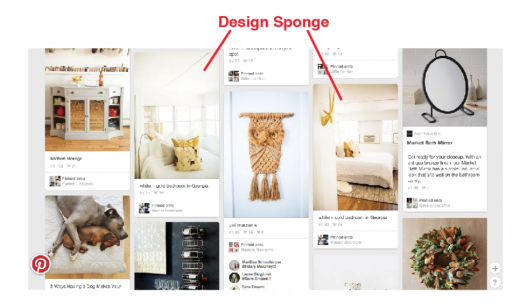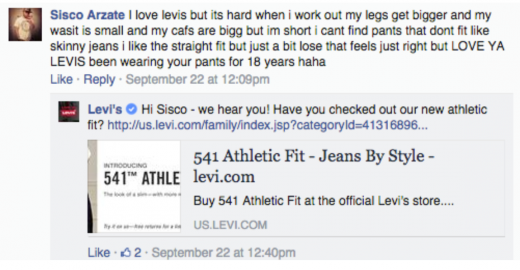
Joey Kotkins is the CMO & Co-Founder of Inside Social.
Social media has proven itself to be a legitimate marketing channel, however, most brands, including e-commerce brands, are still in the mindset that social is just a top-of-the-funnel marketing channel.
But as the social networks have matured and consumers’ social media behaviors have evolved, social has become a powerful opportunity for e-commerce brands to drive sales. In fact, the Internet Retailer’s 2014 Social Media 500 sold an estimated $2.69 billion last year from shoppers clicking directly from social networks, up 62.5 percent from 2012.
As social has increasingly become pay-to-play, marketers are more accountable than ever for showing results beyond likes and follows.
To understand how the best sell on social and earn a positive ROI on their social investment, we researched 100 of the top social selling e-commerce brands on Facebook, Twitter, and Pinterest. For two weeks, we recorded each of their posts across six dimensions: 1. type (video, image, or text), 2. purpose (promote product or brand building), 3. copy, 4. whether it was linked, 5. whether it was original or user-generated content (including retweets and repins), and 6. posting time.
We then compiled this data and analyzed it for patterns. Here’s what we found to be the best practices for social posting that drives sales:
A typical week of social posting
On Facebook, the best brands post 12 times per week. And most of them post slightly more often during the weekdays than the weekends. As for time of day to post, every brands has a different social sweet spot.
Once you’ve found when yours is, it’s important to maintain consistency.
Most brands were more active on Twitter. Often, brands tweeted the same content as their Facebook posts, but would tailor the copy specifically for their Twitter audience.
On top of that, brands found that Twitter is a great place to be a part of a larger conversation, with retweets making up 20 percent of total tweets.
The top brands use Pinterest like a digital catalogue, pinning about 100 pins per week. Of those, about two-thirds of the pins are of products–featured products, seasonal offerings, etc. and the remaining are repins of complementary things such as recipes or living spaces that could incorporate their products.
West Elm, for example, frequently repins interior spaces from the design blog, designsponge.com.
User-generated content should be leveraged
User-generated content is an endorsement – a recommendation from a peer, the most trusted and most powerful form of marketing. Leveraging that content takes that very powerful recommendation and gives it the broader reach of the brand.
But it also creates a cycle. When other customers see user-generated content being shared by the brand, they are more likely to submit content themselves.
Everyone wants to be recognized, especially by a brand they like, and the brand’s amplification gives them a greater platform for their voice to be heard.
Visuals dominate
Over 90 percent of the top brands’ Facebook posts contain an image and the majority of tweets contain an image or video. Studies have shown (and the Facebook algorithm agrees) that visuals are more engaging than text.
With how easy it is for brands to create visuals, and how quickly social has become a visual-first medium, there’s no question for brands it’s a best practice for selling on social.
The top brands post on average one video per week. In our research, popular video content included sneak peeks at new products, interviews with product designers, behind-the-scenes footage of your brand, and how-to tutorials. As quality video becomes easier to produce, we expect to see more video from the top brands.
Short copy wins
Along the same lines, short copy is key to selling on social. We’re not downplaying the importance of creative copywriting – it’s very difficult to write an intriguing, short post–but let the visuals and content carry the post.
We found that the top brands stay under 100 characters, and Buffer’s best practice for Facebook post writing is to try to keep it to 40 to 70 characters.
The majority of posts feature products
Our research found that 75 percent of the top brands’ Facebook posts feature products, 56 percent of tweets feature products, and 65 percent of Pinterest pins feature products.
If you want to sell on social, you have to give your fans easy opportunities to convert by posting a curated mix of your most social products.
Remember, just because a product is popular in general doesn’t mean it will be popular on social. It takes some experimenting and conversion-data analysis to figure out what your most social products are.
Links are great solutions
The best brands respond to questions and comments with links to solutions. These were often the product they’re looking for, a suggested product, a landing page, etc. The links provide far more information than a post could, and gives the customer the most seamless opportunity to convert.
Selling on social isn’t easy, but if you start by using these best practices of the best brands, you’ll be well on your way. Nobody knows your brand and your customers better than you do, so feel free to take these best practices and riff on them to personalize your social strategy to best fit your audience.
For more ecommerce social selling best practices, check out the full e-book.
Read next: Should your e-commerce brand market on emerging social networks?
Get the TNW newsletter
Get the most important tech news in your inbox each week.









